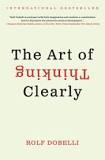Framing Your Business Blog

“It’s not what you say, but how you say it,” says Rolf Dobelli in “The Art of Thinking Clearly.” If a message is communicated in different ways, it will also be received in different ways, Dobelli asserts. When researchers presented a group of people with a choice between two kinds of meats:
- 99 percent fat free
- 1 percent fat
respondents ranked the first as healthier, even though they are the same!
Wordsmithing is an important element in blog content authoring, because we have the power to use word choices to put the emphasis on specific elements of a product or a service.
Today’s consumer is used to having marketers use the technique of glossing, which is a deceptive sort of framing. The typical online searcher, therefore, is leery of hype and unrealistic claims.
That’s precisely why, Velocity Partners claims, honesty in content marketing has such “insane power”, and why they advise “Take your weakest points and put them in the spotlight”. The principle behind the tactic: managing expectations so you can slightly exceed them.
Velocity Partners offers eight reasons you should consider using insane honesty in your blog:
- It’s surprising because it’s so rare.
- It’s charming.
- We like people who make fun of themselves more than we like braggarts.
- It alienates the people who were never going to do business with you anyway.
- It attracts your ideal prospects.
- It builds trust.
- It signals confidence.
- It focuses you on battles you can win.
For us business blog content writers, it’s important to remember that every choice of words we make involves framing. Question is – will we use glossing to put an artificial shine on the weak aspects of the business or practice we’re writing about – or will we choose the insane honesty route?





Follow us online!